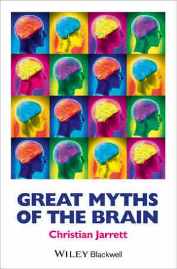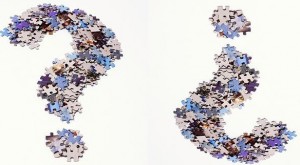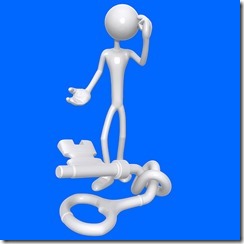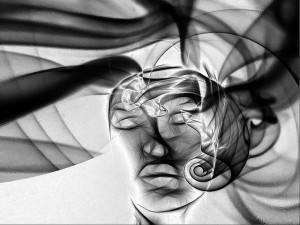
Sorting fact from fiction. Sorting brain myth from fact, can be difficult, especially when using the internet for information.
Since beginning Changed Lives New Journeys I have learned much more about many aspects of the brain, and brain injury.
Researching brain myths in these past weeks I realised one of my major learnings has been “Believe no-one. Check it out for yourself.”
Believe it or Not: a Brain Myth vs Fact Story
The following story is to illustrate the differing views that can arise when researching facts, information, treatment, and therapies.
About a year ago while researching an article on the causes of brain injury I came across a TED talk by Dr Amen entitled The most important lesson from 83,000 brain scans. I watched and I was impressed. it looked amazing and I wanted to believe it possible. I looked up a bit more about Dr Amen and thought at first I would share the talk.
It seemed like amazing work. He was a Doctor.They had completed 83,000 SPECT brain scans. It was on TED. That sounded pretty solid. Yet something about it did not seem quite right to me.
How could that level of scan give such clear diagnoses? If it is based on solid research why weren’t more people using it?
I did some more research and became less sure. I had unanswered questions so I decided not share it at that time.
Two weeks ago researching the “A Movie, The Brain 10 Percent Myth and 1,135,00010″ I had forgotten about those SPECT scans and Dr Amen . Then I came across the book ’Great Myths of the Brain’ by Christian Jarret. Christian describes the way this type of brain scan is being used to diagnose mental illness, as a myth. He explains that the level of detail provided by the scans does not support accurate diagnosis.
. Then I came across the book ’Great Myths of the Brain’ by Christian Jarret. Christian describes the way this type of brain scan is being used to diagnose mental illness, as a myth. He explains that the level of detail provided by the scans does not support accurate diagnosis.
Curiosity sent me looking for what other information might support this being brain myth or fact. Firstly looking at brain myth and brain injury in Willy Wonka Brain Injury and Brain Myth” and now seeking out other peoples views.
From the sceptics and brain myth busters
‘Director’s Blog: Brain Scans – Not Quite Ready for Prime Time’. This article from the National Institute of Mental Health Director Thomas Insel gives an account of why he believes that Neuro-imaging will be useful as a tool aiding diagnosis in the future but not at present. Further he questions the type of scanning (SPECT scan) used. The National Institute of Mental Health (NIMH) is part of the National Institutes of Health (NIH), a component of the U.S. Department of Health and Human Services.
‘The Dark Side of Diagnosis by Brain Scan’ here the blogger, Neurocritic, questions the work of Dr Amen and his use of SPECT brain scans as a diagnostic tool. Explaining more about the SPECT scan:
“SPECT (single photon emission computed tomography) is a relatively inexpensive cousin of PET scanning (positron emission tomography) with lower spatial resolution.1 There is no peer reviewed literature that establishes SPECT as a reliable method of diagnosing psychiatric disorders.” (Neurocritic, 2012)
‘Daniel Amen is the most popular psychiatrist in America. To most researchers and scientists, that’s a very bad thing.’ the title makes the views presented by Neely Tucker clear. The Washington Post article shares a range of views from sceptics. Stating:
“None of the nation’s most prestigious medical organizations in the field — including the APA, the National Institute of Mental Health, the American College of Radiology, the Society of Nuclear Medicine and Molecular Imaging and the National Alliance on Mental Illness — validates his claims.”
I also went looking for opinions supporting the use of SPECT scans. While there were organisations who state they are using this technology, to assist in the diagnosis of neuro-degenerative diseases, stroke, dementia, apart from the work of Dr Amen, I did not find supporting research.
I did not complete a detailed search so if you are aware of further research on SPECT scanning and diagnosis of mental illness or disorders of the brain, please share in the comments below.
Sorting Brain Myth from Fact

The example above and the weekly research I do for articles on Changed Lives New Journeys highlights for me how difficult it can be to separate myths from facts.
Especially about the brain.
‘What Happens After the Truth Puts Its Boots On’ while not specifically about brain myth this fascinating article looks at how rumours, lies and myth spreads on the internet.
How do you know what is fact and what is a reluctance by experts to change old thinking?
What research is good and grounded research and what is less reliable?
Whose opinion is correct? Who do you believe? I have no easy answer.
The recommendation I make is to be sceptical, believe no-one and do your research to gain a clearer view.
- Scrutinise the range of views available.
- Investigate who is responsible for the site. Is it a reliable source? Is it an advertising or promotional venture?
- If you are short on time stick to a small number of sites you have already checked out as solid and reliable.
Brain Myth Busters, Sceptics and De-bunkers!
As I searched for answers I found some interesting resources about brain myths that I share here. Remember don’t be afraid to be critical in your analysis.
There is a particular focus here on those I will call ‘brain myth debunkers’. This is not all there is, it is a range that may lead you to other sources.
Articles focussing on debunking Brain Myths

Myths and Facts About Traumatic Brain Injury from the CBIRT: Center on Brain Injury Research & Training at the University of Oregon, USA describes myths about children and brain injury.
Power Up Your Brain: Myth vs. Reality by Megan Erickson on Big Think looks at both facts and myths about the brain. Including: “Fact: Meditation Can Change Your Brain.” … “Myth: Listening to Mozart Will Make You Smarter.”
Neuromyths from BrainFacts.org summarises a range of myths. Finding that “False facts repeated often are tough to correct. Some misconceptions about the brain persist in the classroom and the home.”
‘Debunking the ‘gender brain’ myth’ the Australian Broadcasting Corporation (ABC) in an article by Anna Salleh. Mythbusting the gender difference between male and female brains:
Debunking brain myths including the left brain right brain. The Centre for Educational Research and Innovation (CERI) part of the The Organisation for Economic Co-operation and Development (OECD) has a series of papers on brain myth.
MythBuster the television series provided an entertaining look at busting the 10% myth.
10 brain myths including the myth that your brain is gray! On How Stuff Works
Brain Myth Buster Blogs
There are blogs and websites that focus on busting myths about the brain and neuroscience.
As a starting point, Christian Jarret acknowledges fellow brain myth busters in his book Great Myths of the Brain. The websites for each are listed below:
Neurocritic “Deconstructing the most sensationalistic recent findings in Human Brain Imaging, Cognitive Neuroscience, and Psychopharmacology.”
Neurobonkers also linked to Big Think a “knowledge forum”
Mind Hacks “Neuroscience and psychology tricks to find out what’s going on inside your brain.”
Neurobollocks “Debunking pseudo-neuroscience so you don’t have to.”
Neuroskeptic – in the online Discover Magazine – science for the curious. I am not sure who this site is connected to.
Mo Costandi, ‘Neurophilosophy’ at ‘The Guardian’
Dean Burnett, ‘Brain Flapping’ at The Guardian
Brain Myths on Psychology Today In addition to his book Great Brain Myths, mentioned above, Christian Jarrett also dispels myths in this blog.
Twitter sources
While not all this list are Myth busters, if you are a Twitter fan this list from the Research Digest produced by the British Psychological Society (the representative body for psychology and psychologists in the UK) provides the connections for the The 100+ most followed psychologists and neuroscientists on Twitter.
And Finally
Don’t believe anyone – not even me – seek out supporting information .
Dig around for facts and information:check what you are hearing, or reading.
Check your own facts and assumptions.
I hope these resources give you a range of news and views. That there is something that might just capture your interest. It would be great to hear from you.
A final reminder to remain sceptical and research carefully.
Please leave comments on any other brain myth busters you have found, or what you discover in the resources here.


